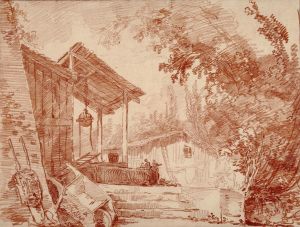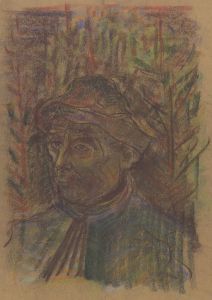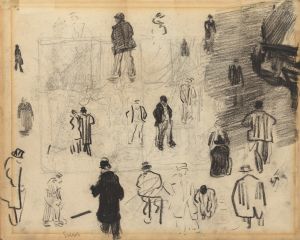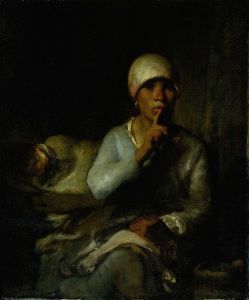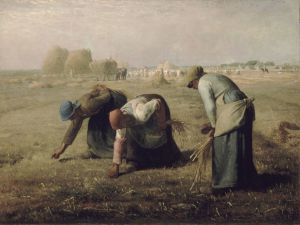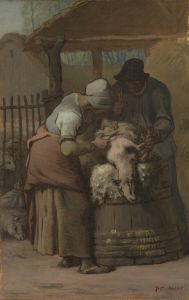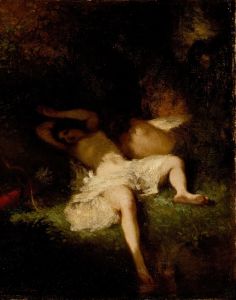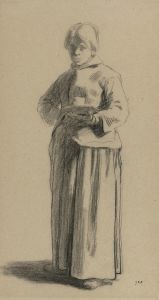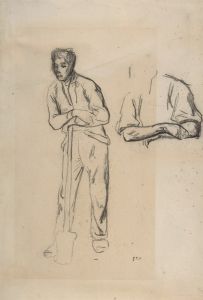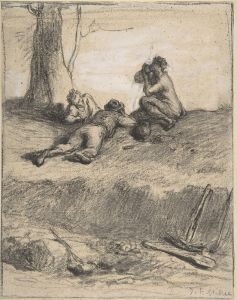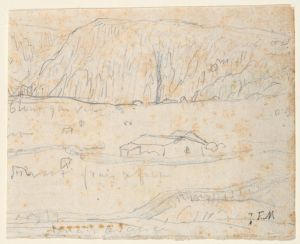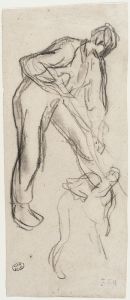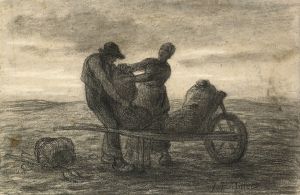
Study for Man with a Wheelbarrow
A hand-painted replica of Jean-François Millet’s masterpiece Study for Man with a Wheelbarrow, meticulously crafted by professional artists to capture the true essence of the original. Each piece is created with museum-quality canvas and rare mineral pigments, carefully painted by experienced artists with delicate brushstrokes and rich, layered colors to perfectly recreate the texture of the original artwork. Unlike machine-printed reproductions, this hand-painted version brings the painting to life, infused with the artist’s emotions and skill in every stroke. Whether for personal collection or home decoration, it instantly elevates the artistic atmosphere of any space.
Jean-François Millet, a prominent French painter and one of the founders of the Barbizon School, is renowned for his depictions of peasant life and rural landscapes. His work "Study for Man with a Wheelbarrow" is a testament to his focus on the dignity and simplicity of rural laborers. Although specific details about this particular study are limited, it is consistent with Millet's broader oeuvre, which often highlights the daily lives and struggles of peasants.
Millet was born in 1814 in the village of Gruchy, Normandy, into a family of farmers. His upbringing in a rural environment profoundly influenced his artistic vision. He moved to Paris in 1837 to study art, where he was exposed to the works of the Old Masters and contemporary artists. However, Millet's unique style began to emerge when he settled in Barbizon, a village near the Forest of Fontainebleau, in the 1840s. There, he became associated with the Barbizon School, a group of artists who sought to break away from the formalism of academic art and instead focus on naturalistic and realistic portrayals of rural life.
"Study for Man with a Wheelbarrow" likely served as a preparatory work for a larger composition or as an exploration of a theme that Millet frequently revisited: the labor of peasants. In his studies and finished works, Millet often depicted figures engaged in agricultural tasks, such as sowing, harvesting, and tending to animals. These works are characterized by their earthy tones, robust figures, and a sense of solemnity and respect for the subjects.
Millet's approach to depicting peasants was revolutionary for his time. During the mid-19th century, the art world was dominated by Romanticism and historical painting, which often idealized or dramatized its subjects. In contrast, Millet's focus on the everyday lives of common people was seen as radical. His works did not romanticize rural life; instead, they presented it with a raw honesty that highlighted both its hardships and its inherent dignity.
The wheelbarrow, a simple tool, becomes a symbol in Millet's work. It represents the toil and labor that define the lives of the peasants he depicted. By focusing on such elements, Millet emphasized the connection between humans and the land, a theme that resonated with the social and economic changes of his time, including the Industrial Revolution and the resulting shifts in rural life.
Millet's work, including studies like "Study for Man with a Wheelbarrow," had a significant impact on later artists, particularly those associated with Realism and Impressionism. Artists such as Vincent van Gogh admired Millet for his ability to convey the nobility of peasant life. Van Gogh, in particular, was inspired by Millet's themes and style, often creating works that echoed Millet's focus on rural subjects.
In conclusion, while specific details about "Study for Man with a Wheelbarrow" are scarce, the work fits within Jean-François Millet's broader artistic mission to portray the lives of peasants with dignity and realism. His studies and paintings continue to be celebrated for their profound empathy and their groundbreaking approach to subject matter, influencing generations of artists who followed.





